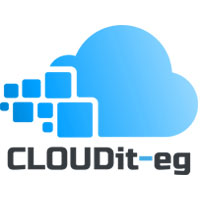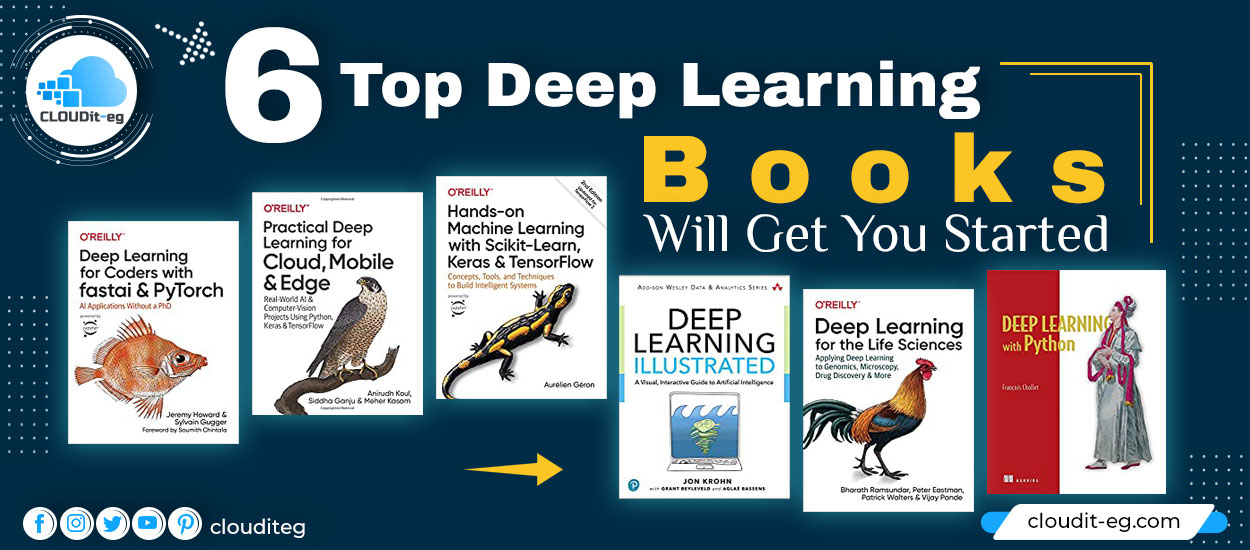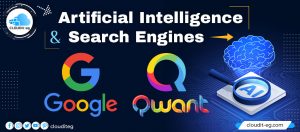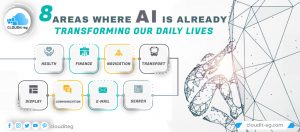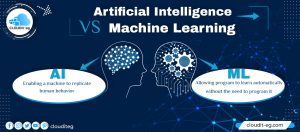Machine Learning, Deep Learning, and Artificial Intelligence are areas that are experiencing strong growth and are the subject of more and more studies. Even though the advanced applications one hears about may seem intimidating and inaccessible, the basic concepts are still easy to grasp. In this article, we’re going to go over 6 top Deep Learning books that will get you started, which are aimed at beginners or those who are interested in speech recognition, image classification, or recommendation.
1. Deep Learning for Coders with Fastai and PyTorch: AI Applications Without a Ph.D. 1st Edition
by Jeremy Howard, Sylvain Gugger | August 11, 2020
Deep learning is often viewed as the exclusive domain of math PhDs and big tech companies. But as this hands-on guide demonstrates, programmers comfortable with Python can achieve impressive results in deep learning with little math background, small amounts of data, and minimal code. How? With fastai, the first library to provide a consistent interface to the most frequently used deep learning applications.
Authors Jeremy Howard and Sylvain Gugger, the creators of fastai, show you how to train a model on a wide range of tasks using fastai and PyTorch. You’ll also dive progressively further into deep learning theory to gain a complete understanding of the algorithms behind the scenes.
- Train models in computer vision, natural language processing, tabular data, and collaborative filtering
- Learn the latest deep learning techniques that matter most in practice
- Improve accuracy, speed, and reliability by understanding how deep learning models work
- Discover how to turn your models into web applications
- Implement deep learning algorithms from scratch
- Consider the ethical implications of your work
- Gain insight from the foreword by PyTorch cofounder, Soumith Chintala.
2. Practical Deep Learning for Cloud, Mobile, and Edge: Real-World AI & Computer-Vision Projects Using Python, Keras & TensorFlow 1st Edition
by Anirudh Koul, Siddha Ganju, Meher Kasam | November 12, 2019
Whether you’re a software engineer aspiring to enter the world of deep learning, a veteran data scientist, or a hobbyist with a simple dream of making the next viral AI app, you might have wondered where to begin. This step-by-step guide teaches you how to build practical deep learning applications for the cloud, mobile, browsers, and edge devices using a hands-on approach. If your goal is to build something creative, useful, scalable, or just plain cool, this book is for you.
Relying on decades of combined industry experience transforming deep learning research into award-winning applications, Anirudh Koul, Siddha Ganju, and Meher Kasam guide you through the process of converting an idea into something that people in the real world can use.
- Train, tune, and deploy computer vision models with Keras, TensorFlow, Core ML, and TensorFlow Lite.
- Develop AI for a range of devices including Raspberry Pi, Jetson Nano, and Google Coral.
- Explore fun projects, from Silicon Valley’s Not Hotdog app to 40+ industry case studies.
- Simulate an autonomous car in a video game environment and build a miniature version with reinforcement learning.
- Use transfer learning to train models in minutes.
- Discover 50+ practical tips for maximizing model accuracy and speed, debugging, and scaling to millions of users.
3. Hands-On Machine Learning with Scikit-Learn, Keras, and TensorFlow: Concepts, Tools, and Techniques to Build Intelligent Systems 2nd Edition
by Aurélien Géron | October 15, 2019
Through a series of recent breakthroughs, deep learning has boosted the entire field of machine learning. Now, even programmers who know close to nothing about this technology can use simple, efficient tools to implement programs capable of learning from data. This practical book shows you how.
By using concrete examples, minimal theory, and two production-ready Python frameworks—Scikit-Learn and TensorFlow—author Aurélien Géron helps you gain an intuitive understanding of the concepts and tools for building intelligent systems. You’ll learn a range of techniques, starting with simple linear regression and progressing to deep neural networks. With exercises in each chapter to help you apply what you’ve learned, all you need is programming experience to get started.
- Explore the machine learning landscape, particularly neural nets
- Use Scikit-Learn to track an example machine-learning project end-to-end
- Explore several training models, including support vector machines, decision trees, random forests, and ensemble methods
- Use the TensorFlow library to build and train neural nets
- Dive into neural net architectures, including convolutional nets, recurrent nets, and deep reinforcement learning
- Learn techniques for training and scaling deep neural nets.
4. Deep Learning Illustrated: A Visual, Interactive Guide to Artificial Intelligence (Addison-Wesley Data & Analytics Series) 1st Edition
by Jon Krohn, Grant Beyleveld, Aglaé Bassens | September 18, 2019
Deep learning is one of today’s hottest fields. This approach to machine learning is achieving breakthrough results in some of today’s highest-profile applications, in organizations ranging from Google to Tesla, Facebook to Apple. Thousands of technical professionals and students want to start leveraging its power, but previous books on deep learning have often been non-intuitive, inaccessible, and dry.
In Deep Learning Illustrated,
three world-class instructors and practitioners present a uniquely visual, intuitive, and accessible high-level introduction to the techniques and applications of deep learning. Packed with vibrant, full-color illustrations, it abstracts away much of the complexity of building deep learning models, making the field more fun to learn, and accessible to a far wider audience.
Part I’s high-level overview explains what Deep Learning is, why it has become so ubiquitous, and how it relates to concepts and terminology such as Artificial Intelligence, Machine Learning, Artificial Neural Networks, and Reinforcement Learning. These opening chapters are replete with vivid illustrations, easy-to-grasp analogies, and character-focused narratives.
Building on this foundation, the authors then offer a practical reference and tutorial for applying a wide spectrum of proven deep learning techniques. Essential theory is covered with as little mathematics as possible and illuminated with hands-on Python code.
The theory is supported with practical “run-throughs” available in accompanying Jupyter notebooks, delivering a pragmatic understanding of all major deep learning approaches and their applications: machine vision, natural language processing, image generation, and video gaming.
To help readers accomplish more in less time, the authors feature several of today’s most widely-used and innovative deep learning libraries, including TensorFlow and its high-level API, Keras; PyTorch, and the recently-released high-level Coach, a TensorFlow API that abstracts away the complexity typically associated with building Deep Reinforcement Learning algorithms.
5. Deep Learning for the Life Sciences: Applying Deep Learning to Genomics, Microscopy, Drug Discovery, and More 1st Edition
by Bharath Ramsundar, Peter Eastman, Patrick Walters, Vijay Pande | April 28, 2019
Deep learning has already achieved remarkable results in many fields. Now it’s making waves throughout the sciences broadly and the life sciences in particular. This practical book teaches developers and scientists how to use deep learning for genomics, chemistry, biophysics, microscopy, medical analysis, and other fields.
Ideal for practicing developers and scientists ready to apply their skills to scientific applications such as biology, genetics, and drug discovery, this book introduces several deep network primitives. You’ll follow a case study on the problem of designing new therapeutics that ties together physics, chemistry, biology, and medicine—an example that represents one of science’s greatest challenges.
- Learn the basics of performing machine learning on molecular data
- Understand why deep learning is a powerful tool for genetics and genomics
- Apply deep learning to understand biophysical systems
- Get a brief introduction to machine learning with DeepChem
- Use deep learning to analyze microscopic images
- Analyze medical scans using deep learning techniques
- Learn about variational autoencoders and generative adversarial networks
- Interpret what your model is doing and how it’s working
6. Deep Learning with Python 1st Edition
by François Chollet | December 22, 2017
Summary
Deep Learning with Python introduces the field of deep learning using the Python language and the powerful Keras library. Written by Keras creator and Google AI researcher François Chollet, this book builds your understanding through intuitive explanations and practical examples.
Purchase of the print book includes a free eBook in PDF, Kindle, and ePub formats from Manning Publications.
About the Technology
Machine learning has made remarkable progress in recent years. We went from near-unusable speech and image recognition to near-human accuracy. We went from machines that couldn’t beat a serious Go player, to defeating a world champion. Behind this progress is deep learning—a combination of engineering advances, best practices, and theory that enables a wealth of previously impossible smart applications.
About the Book
Deep Learning with Python introduces the field of deep learning using the Python language and the powerful Keras library. Written by Keras creator and Google AI researcher François Chollet, this book builds your understanding through intuitive explanations and practical examples. You’ll explore challenging concepts and practice with applications in computer vision, natural-language processing, and generative models. By the time you finish, you’ll have the knowledge and hands-on skills to apply deep learning in your own projects.
What’s Inside
- Deep learning from first principles
- Setting up your own deep-learning environment
- Image-classification models
- Deep learning for text and sequences
- Neural style transfer, text generation, and image generation
